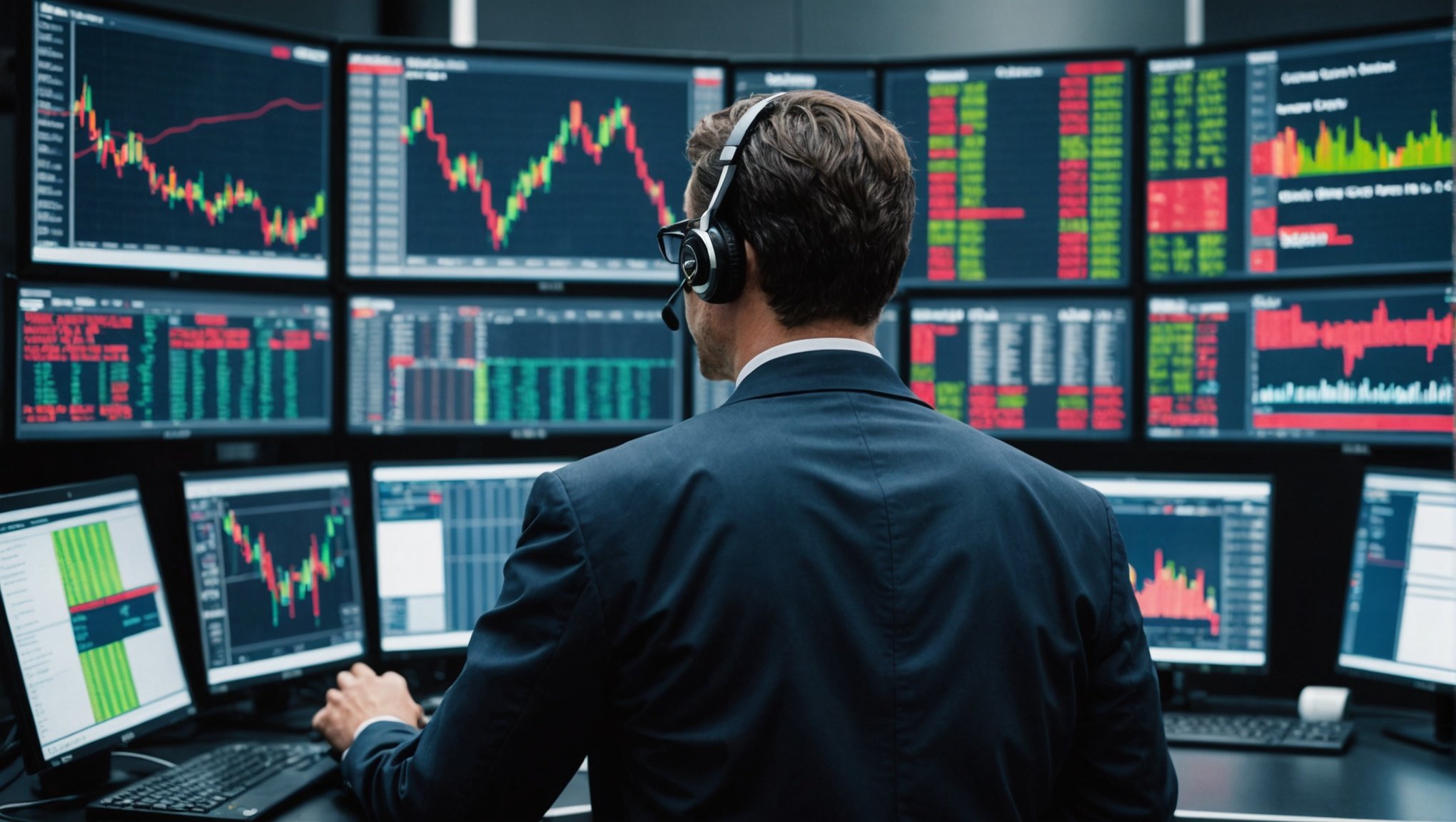Revolutionizing Stock Trading: How AI Algorithms Boost Real-Time Decision Making
In the fast-paced world of stock trading, the integration of artificial intelligence (AI) has been nothing short of revolutionary. AI algorithms are transforming the way traders analyze market data, make decisions, and execute trades. Here’s a deep dive into how AI is reshaping the landscape of stock trading and what this means for investors and traders.
The Role of AI in Stock Trading
AI in stock trading, often referred to as algorithmic trading, leverages advanced algorithms to automate trading decisions. These systems analyze vast amounts of historical and real-time data, identify patterns, and execute trades at speeds that human traders cannot match.
Additional reading : Transforming Footsteps into Power: Can Piezoelectric Materials Fuel Our Streetlights?
Data Analysis and Pattern Recognition
One of the key strengths of AI in stock trading is its ability to process and analyze large datasets. AI algorithms can identify complex patterns within stock market data, such as price trends and trading volume shifts, which may not be visible to human traders. For instance, AI can analyze historical prices, trading volumes, and market sentiment data to predict future market movements[3].
- Historical prices: Analyzing past price movements to identify trends.
- Trading volumes: Understanding the volume of trades to gauge market interest.
- Market sentiment: Evaluating news articles, blogs, and social media for market sentiment analysis.
- Economic data: Incorporating interest rates, inflation, and other macroeconomic data to make predictions.
Predictive Modeling and Machine Learning
Machine learning (ML) models are the backbone of AI in stock trading. These models learn from historical data to predict future price movements or identify buy/sell signals. Here are some common techniques used:
This might interest you : Exploring the Progress of Quantum Internet: Implications for the Future of Cybersecurity
- **Regression Models**: Predict continuous stock prices based on various inputs such as technical indicators and fundamental indicators.
- **Classification Models**: Predict categorical outcomes such as “buy” or “sell.”
- **High-Frequency Trading (HFT)**: Execute trades in fractions of a second based on very short-term price fluctuations.
- **Momentum Trading**: Identify stocks moving strongly in one direction and execute trades based on this momentum.
- **Mean Reversion**: Detect when stocks have moved too far from their average price and are likely to revert[3][4].
Real-Time Decision Making and Execution
AI’s ability to process data in real-time is a game-changer for stock trading. Here’s how it enhances decision-making and execution:
Automated Decision-Making
AI-powered systems can monitor various stock markets simultaneously, adjusting trading strategies as new data comes in. This enables automated decision-making based on pre-programmed rules or adaptive algorithms, allowing trades to be executed without human intervention[3].
Real-Time Alerts and Monitoring
AI systems can generate real-time alerts for human traders, highlighting potential trading opportunities or warning about high-risk situations. For example, ChatGPT can be used to gather real-time market information and perform technical analysis, providing traders with up-to-date insights to make informed decisions[3].
Risk Management and Emotional Bias
One of the significant advantages of AI in stock trading is its ability to manage risk and eliminate emotional bias.
Emotionless Trading
Unlike human traders, AI systems do not suffer from emotional biases, leading to more rational decision-making. This reduces the impact of fear, greed, and other emotions that can cloud human judgment during trading[2].
Real-Time Risk Assessment
AI systems can assess risk levels in real-time, adjusting trading strategies to minimize potential losses. This includes identifying patterns and anomalies that may indicate fraudulent activities or other risks[2].
Advanced Trading Strategies
AI has enabled the development of sophisticated trading strategies that were previously impossible to implement manually.
High-Frequency Trading
AI algorithms can execute multiple trades within fractions of a second, capitalizing on slight price differences across markets. This makes high-frequency trading faster and more accurate by automating trades based on real-time data[4].
Event-Driven Simulations
Models like StockAgent operate on event-driven simulations, allowing them to react to real-time market events and external factors. This includes using multi-agent systems to simulate diverse trading behaviors and strategies, providing a comprehensive view of potential outcomes[2].
Personalized Investment Advice and Portfolio Management
AI is not just limited to professional traders; it also offers personalized investment advice and portfolio management for individual investors.
Robo-Advisors
AI-powered robo-advisors analyze a user’s risk tolerance, financial goals, and market conditions to offer tailored recommendations. These systems make investing accessible and efficient for all levels of traders, providing insights that help users optimize returns according to their unique financial needs[4].
The Future of AI in Stock Trading
As technology continues to advance, the potential for AI-driven trading strategies will only grow.
Edge Computing and Real-Time Analytics
The integration of AI with edge computing is further enhancing the efficiency, speed, and intelligence of localized data processing. This approach enables real-time data analysis and decision-making closer to where the data is generated, reducing latency and improving application performance[5].
Continuous Learning and Adaptation
AI models continuously learn from new data, improving their accuracy and effectiveness over time. This adaptability allows trading strategies to evolve with changing market conditions, making AI a vital tool for traders in today’s dynamic financial markets[2].
Practical Insights and Actionable Advice
For those looking to leverage AI in their stock trading, here are some practical insights and actionable advice:
Start with Open-Source Platforms
Exploring open-source platforms for algorithmic trading can be a great starting point. These platforms offer a framework for autonomous intelligence and allow you to implement AI-driven trading strategies without significant initial investment[2].
Use Machine Learning Models
Implement machine learning models to analyze historical data and predict future market movements. Supervised learning models are particularly effective in learning from historical data to make accurate predictions[3].
Monitor and Adjust
Continuously monitor your trading strategies and adjust them based on real-time data. AI systems can help identify when strategies need to be tweaked to optimize performance[4].
The integration of AI in stock trading has revolutionized the way traders make decisions and execute trades. With its ability to analyze vast amounts of data, identify complex patterns, and make real-time decisions, AI is an indispensable tool for both professional and individual traders.
As Anthony Mares, Director of Infrastructure Engineering at DataBank, notes, “By bringing AI closer to where data is generated, edge computing becomes faster, more responsive, and more efficient. This combination not only improves performance in applications requiring real-time processing but also enables smarter, more autonomous systems across various industries.”[5]
In the words of a seasoned trader, “AI has transformed my trading strategy by providing real-time insights and automating decision-making. It’s like having a super-smart, emotionless partner who never sleeps and always stays on top of market trends.”
As the financial markets continue to evolve, one thing is clear: AI is here to stay and will continue to play a pivotal role in shaping the future of stock trading.
Key Benefits of AI in Trading: A Comparative Table
| Benefit | Description | Impact on Trading |
|---|---|---|
| Speed and Efficiency | Execute trades in milliseconds. | Capitalize on fleeting market opportunities. |
| Emotionless Trading | Eliminate emotional biases. | More rational decision-making. |
| Continuous Learning | Learn from new data continuously. | Improve accuracy and effectiveness over time. |
| Real-Time Data Processing | Analyze and react to real-time data. | Make informed decisions quickly, adapting to market changes. |
| Risk Management | Assess risk levels in real-time. | Minimize potential losses. |
| Predictive Analytics | Predict future market movements. | Position traders advantageously. |
| High-Frequency Trading | Execute multiple trades within fractions of a second. | Capitalize on slight price differences across markets. |
| Personalized Advice | Offer tailored investment advice. | Make investing accessible and efficient for individual investors. |
This table highlights the key benefits of AI in trading, from speed and efficiency to continuous learning and risk management, demonstrating how AI enhances various aspects of the trading process.






